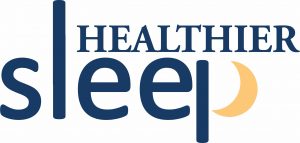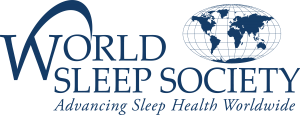Excessive and persistent sleepiness is a hallmark of a group of sleep disorders known as central disorders of hypersomnolence, which include narcolepsy and idiopathic hypersomnia (IH). Narcolepsy is a neurological condition that interferes with the ability to control the sleep/wake cycle, leading to excessive daytime sleepiness and sleep disruption. The sleepiness can be severe and impair functioning, as people with narcolepsy can fall asleep in the middle of activities, such as when driving. Idiopathic hypersomnia (IH) is also a neurological sleep disorder that causes excessive daytime sleepiness regardless of how much sleep a person gets. According to the Hypersomnia Foundation, people with the disorder may wake up from naps and still not feel refreshed.
Both disorders can adversely impact daily activities, affect overall wellbeing, and diminish quality of life. As a result of IH and narcolepsy, emotional and phycological issues can also develop. Problems such as depression and anxiety are common and people with these conditions can feel socially isolated or stigmatized for their condition.
Currently, there is no cure for either idiopathic hypersomnia or narcolepsy. While standard treatment often includes medication, other forms of treatment may also help. Researchers are studying the role cognitive behavior therapy may have in treating both narcolepsy and hypersomnia.
What is Cognitive Behavior Therapy for Hypersomnias (CBT-H)?
The theory behind cognitive behavior therapy is that our thoughts and thinking patterns may affect our behaviors. If we change our thinking patterns, we may also be able to change our behavior.
According to the American Psychological Association, CBT can help people identity thought patterns that lead to negative behaviors. For people with narcolepsy or IH, it is not negative thoughts that cause the symptoms, but the thinking patterns can lead to worsening of depression and anxiety.
CBT-H can teach individuals new ways to cope with symptoms, which may decrease associated issues, such as anxiety and depression. CBT-H may also help people get a better understanding of their symptoms and learn coping skills and problems solving. As individuals learn new techniques, they may gain a sense of confidence in their ability to handle their condition. This is known as self-efficacy.
How does CBT-H help?
CBT-H is a form of psychotherapy that helps individuals with IH or narcolepsy gain a better understanding of how their thoughts and behaviors may play a role in symptom management. Cognitive behavior therapy is not meant to replace standard treatment for these two disorders. Instead, CBT-H is used in addition to medication to reduce the frequency and severity of symptoms.
CBT-H is not a one size fits all approach to treating people with narcolepsy or hypersomnia. Individual goals may vary. Some examples of strategies and techniques of CBT-H include the following:
- Planned naps and structure during the day to improve functioning
- Relaxation exercises and regular schedules to promote sleep quality at night
- Specific strategies for managing anxiety and depression related to hypersomnia symptoms
- Education about hypersomnias to empower patients to better explain their condition to others
- Modifying beliefs to decrease symptoms of depression and enhance self-efficacy
The overall goal of CBT-H is to improve social functioning and phycological welling. For example, improving functioning at work, school, or relationships can have a positive effect on overall quality of life.
What does the research say?
 Dr. Jason Ong, the Director of Behavior Sleep Medicine at Nox Health and Adjunct Associate Professor at Northwestern University, conducted a feasibility study to determine if CBT-H helped improve quality of life or decreased symptoms for people with hypersomnia and narcolepsy.
Dr. Jason Ong, the Director of Behavior Sleep Medicine at Nox Health and Adjunct Associate Professor at Northwestern University, conducted a feasibility study to determine if CBT-H helped improve quality of life or decreased symptoms for people with hypersomnia and narcolepsy.
The first series of studies involved surveys and interviews to determine what was missing in treatments that patients with narcolepsy and IH were currently receiving. “Participants felt their quality of life was not addressed with standard treatment,” said Ong. “We found that people were still struggling with symptoms even with treatment. This prompted us to develop a CBT program to see if we could address the clinical gap in treatment for these two sleep disorders.”
The most recent study, which was funded by the American Academy of Sleep Medicine Foundation, involved 35 adults with either idiopathic hypersomnia or narcolepsy. The adults participated in six sessions of CBT-H using videoconferencing. “The use of telehealth allowed the program to be more accessible to people that may not have been able to participate,” said Dr. Ong.
Components of the sessions included learning techniques to regulate emotions, strategies to reduce symptoms, such as planned naps, and ways to build healthy habits. The study found participants reported a decrease in depression symptoms and an improvement in self-efficacy.
Dr. Ong explains, “Preliminary data showed CBT-H showed promise in treating IH and narcolepsy. But additional research is needed to confirm that the CBT-H program is what impacted the improvements we saw in this study.”
Tips for dealing with narcolepsy and hypersomnia
In addition to the possible benefits of CBT, additional factors may be useful. Treating narcolepsy and hypersomnia often takes a comprehensive approach. A combination of medication, support, and healthy lifestyle habits may help manage the condition.
Consider the following tips:
- Stay active. Getting regular exercise may help with alertness and energy level.
- Develop a consistent sleep and wake time. Getting into a regular sleep/wake pattern is helpful to get your body used to a rhythm.
- Limit caffeine intake several hours before bed. Caffeine is a stimulant and can interfere with restful sleep.
- Make your sleep environment comfortable. Most people sleep best in a cool, quiet room. Block out noise or light as much as possible.
- Work with your doctor. Narcolepsy and hypersomnia may be treated with medication. In some cases, it is trial and error to see what works. Maintain good communication and let your doctor know about any side effects from your medications.
- Enlist support. Talk to your family and friends about how they can help. Also, consider joining a support group, which can be a great source of information.

………………………………………………………………………………………………………………………………………………………………………………………………………………………………………………
MaryAnn DePietro, CRT is a medical writer and licensed respiratory therapist with over a decade of clinical experience, MaryAnn DePietro has been published in magazines, newspapers, and on health websites. She earned degrees in both respiratory therapy and rehabilitation. As a therapist, she has worked with hundreds of patients with medical conditions, such as sleep apnea, and other sleep disorders.



